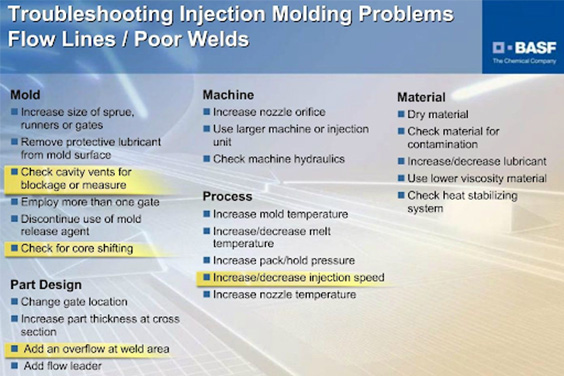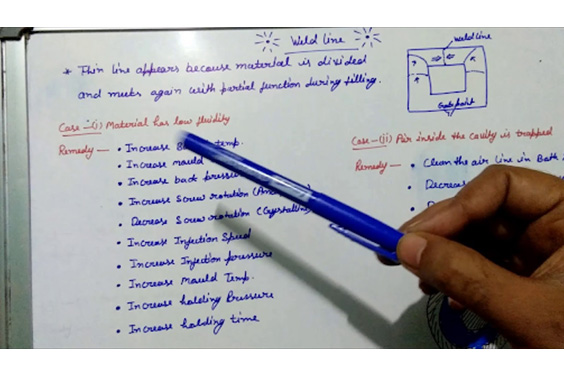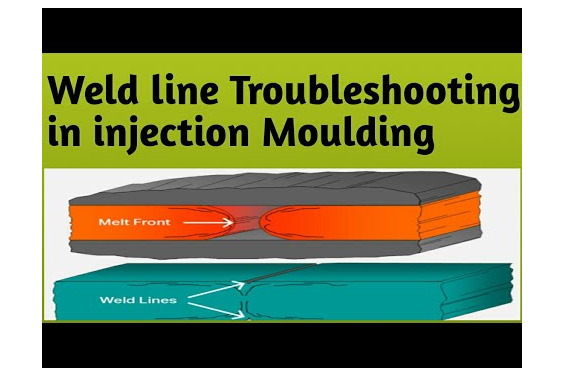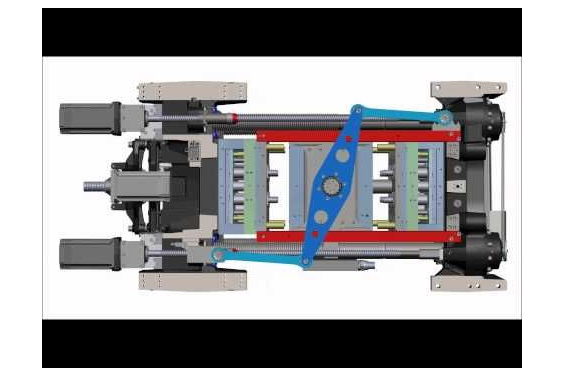Weld Line in Injection molding: What Causes it and How To Troubleshoot it?
- Home
- > Blog
Share :
Share :
Manufacturing processes can cause several types of defects in the final product that no manufacturer wants. Mold manufacturers try their best to remove flaws from their final products by having their machines in place. An example of a prevalent type of manufacturing defect found in a plastic molding product is the weld lines.
Weld lines severely affect the plastic molding products because it might lead to the failure of the entire production process. Weld lines can also cause considerable losses to the manufacturer. This article will discuss everything you need to know about weld lines, including injection molding problems and solutions. But before we delve into anything else, it is essential to understand what weld lines are in injection molding.
What are Weld Line Defects in Injection molding?
Weld line defects are also known as knit lines. Weld line defects are caused at the time when injection molding products come in contact with the mold. When the plastic flows, it remains smooth until it comes in contact with some object. Once the plastic flow comes in contact with something, say, a pin, the plastic flow will then split into two separate parts. After the flow rejoins, it forms a slight depression which is a tiny line called the knit line or weld line.
The Factors that Cause Weld Line in Injection molding
Several factors can cause weld lines or knit lines in injection mold making. Here are some of the factors responsible for causing weld lines in injection molding.
Pressure
A weld line can appear during the absence of enough pressure to push the plastic flow and then meld together. This generally happens in case of faulty machines or when the settings on the machine are inaccurate. This might also happen due to faulty mold design.
Inappropriate temperature
Temperature is another factor that can cause weld or knit lines in injection molding. When the temperature is not very high, there are chances of premature solidification, which can cause weld lines to form. The temperature might fall at some places like in the mold, runners leading to the mold and injection molding machine.
Faulty mold design
Poor mold design is also one of the biggest reasons for the formation of weld lines. Some of the most common errors in the mold designs are the inappropriate thickness of the mold wall and faulty placements of the gates. These common errors can also cause weld or knit lines to form in injection molding.
Speed of the Resin
When the speed at which the plastic flows is slow, it can cause weld or knit lines in the final product. When the speed is slow, the resin will travel very slowly. This will cause the fronts to cool at unequal times, leading to the formation of weld or knit lines.
Impurity in the Resin
When the resin is impure, the flow in the mold will not be very smooth, which can lead to weld lines in the final product.
Mold Release
When there is excess mold release, higher pressure is generally required to inject it into the machine. In case the speed is not appropriate, it will cause weld lines in the product.
Why to Avoid Weld Line in Injection molding
Weld lines might seem a minor problem. However, manufacturers should take measures to avoid them. Weld lines affect the strength and durability of the plastic injection products, and therefore they should be avoided.
Here are some of the important reasons to avoid weld line in injection molding:
- They Make The Products Fragile
Wherever the weld line is on the product is its weakest point. The product can easily break from that point. In case the product is such that it demands strength, then weld lines are a very big problem. Weld lines make the products or materials fragile, thereby compromising the strength of the product. Thus weld lines should not be taken for granted as they affect the product’s strength to a great extent.
- Deformity On The Surface Of The Product
Weld lines can also deform the surface of the product in some cases. If the product is such that it should look attractive, then welding or knit lines on the product’s surface will cause huge losses to the manufacturer. Even a tiny weld line can deform the surface of the product.
It is very important to take all the precautions to avoid weld lines in the first place. A small weld line can affect the strength and durability of the product such as auto plastic parts, which nobody wants. In the final part of this blog, we will tell you some secret tips that will help you eliminate weld lines from the final product.
How to Solve Weld Line in Injection Molding
There are a couple of ways to help you solve the problem of a weld line in injection mold gate design. Here are some tips that will help you remove weld lines:
- Altering A Part Of The Design
By altering the part of the design, you can solve the weld lines in the design. This is generally done by increasing the thickness of the wall. This helps in facilitating required pressure and also ensures that the temperature remains high.
- Altering The Mold Design
Since weld lines can appear due to faulty mold design, weld lines can be easily solved by altering the mold design. This can be done by increasing the size of the runners or gate.
- Making Adjustments In The molding Conditions
Making adjustments in the molding conditions such as temperature, injection pressure and injection speed. By increasing the temperature, pressure and speed to an appropriate level, one can solve the problem of weld lines in their design.
Table of Contents
Final verdict
Defects or blemishes present on a finished part will leave customers dissatisfied and the reputation of the company providing plastic injection molding service might get affected adversely. Owing to the fact that a majority of the products these days are made using plastic, blemishes could easily lead to the functional failure of the end product. Such a blemish on a plastic material is known as a well line.
Weld or knit lines in the product are one of the major manufacturing defects you should avoid by taking all the necessary precautions. Weld lines not only make the product look ugly but also compromise the strength of the product. We hope that this article helped you to troubleshoot all weld line problems.




